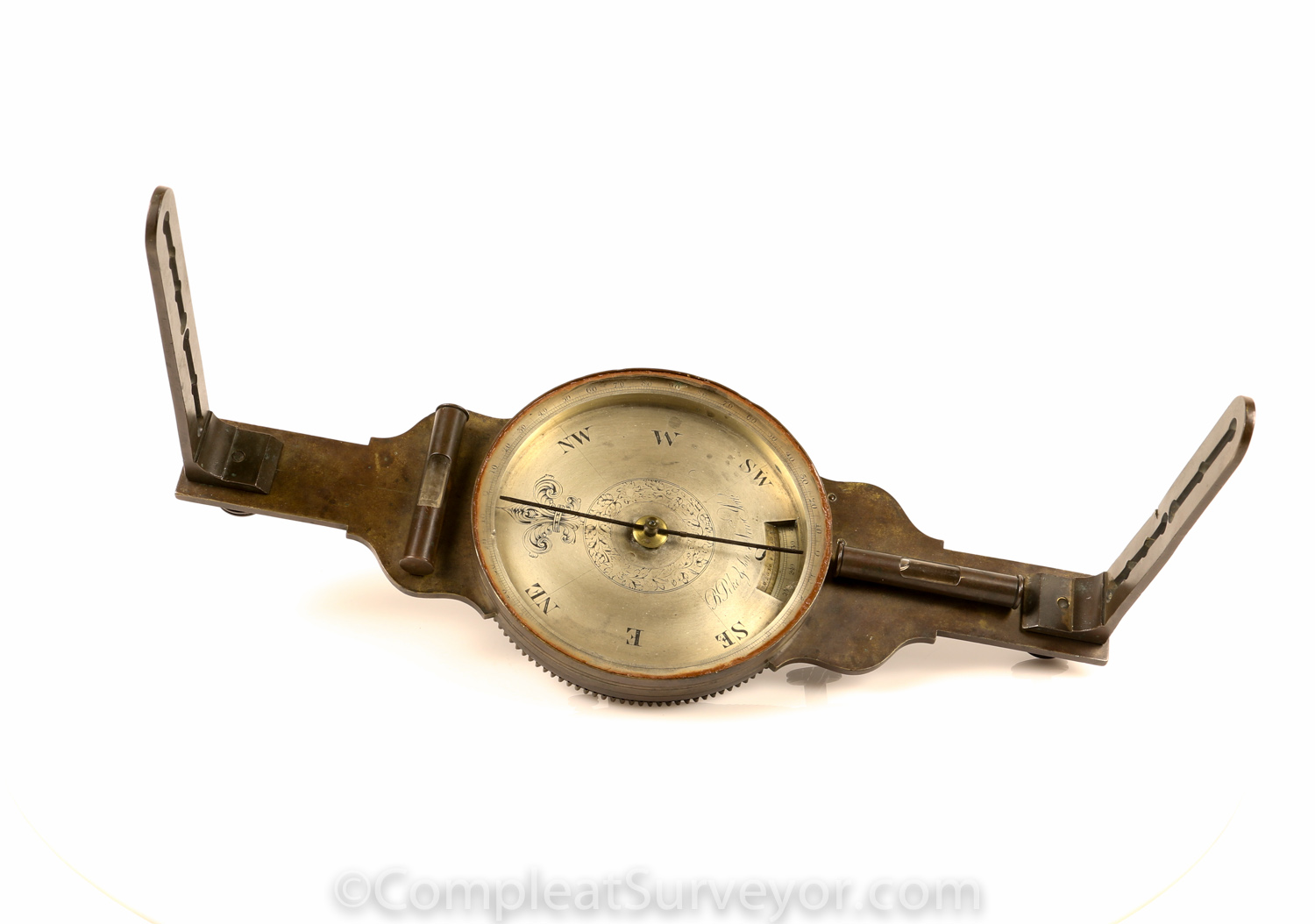
Pike & Son "Theodolyte Compass" (aka Railroad Compass) - Circa 1837
Improved Compasses - Theodolite Compasses - Railroad Compasses
Improved, Theodolite, and Railroad Compasses were different names for the same thing - a compass that could measure horizontal angles without reference to the magnetic needle. I'm going to call them all Railroad Compasses below, except when discussing a specific maker who used one of the different names.
Railroad compasses are VERY cool! While Railroad Compasses themselves played a niche role in the history of surveying , Railroad Compasses played a critically important role in the development of other key instruments. When William Young place a telescope on one of his Improved Compasses (aka Railroad Compass) in the early 1830s, Young created the American Transit (Pic of Very Early Young Transit, Pic of Transit Face - like RR Compass). When Young And William A. Burt put a solar apparatus on one of Young's Improved Compasses, Young and Burt invented the Burt Solar Compass (Pics of First Improved Solar Compass), a device that would revolutionize public land surveying in the western U.S. In hindsight, developing the Railroad compass was a key inflection point in the history of American Surveying, and really signaled the end of the Colonial and Early American Surveying Era.
The Colonial and Early American Surveying Era was characterized by surveyors using relatively simple and cheap compasses to survey large amounts of land, often forested. Given the vast amount of new lands available for settlement, the compasses did not have to be very precise. During the first quarter of the nineteenth century, however, the American economy was evolving into a more sophisticated market, which was preparing the country for the industrialization that was about to come. Railroads started to become a VERY BIG THING, along with mining. And the midwest and western U.S. were starting to open up. All of these things created a demand for more sophisticated and accurate surveying instruments, especially those that did not rely exclusively on the magnetic needle and the problems associated therewith (inaccuracy, variation, a problem with settling the needle, etc). The Railroad compass was one of the first of the more sophisticated instruments to appear, and off-shoots of the Railroad Compass would dominate a century of surveying in the United States.
Early Railroad Compasses do not come up for sale very often, and almost all of the RR compasses that do come up for sale were made by Gurley the late 1850s to1900 or so. Finding an early RR compass made by somebody other than Gurley is quite a prize!
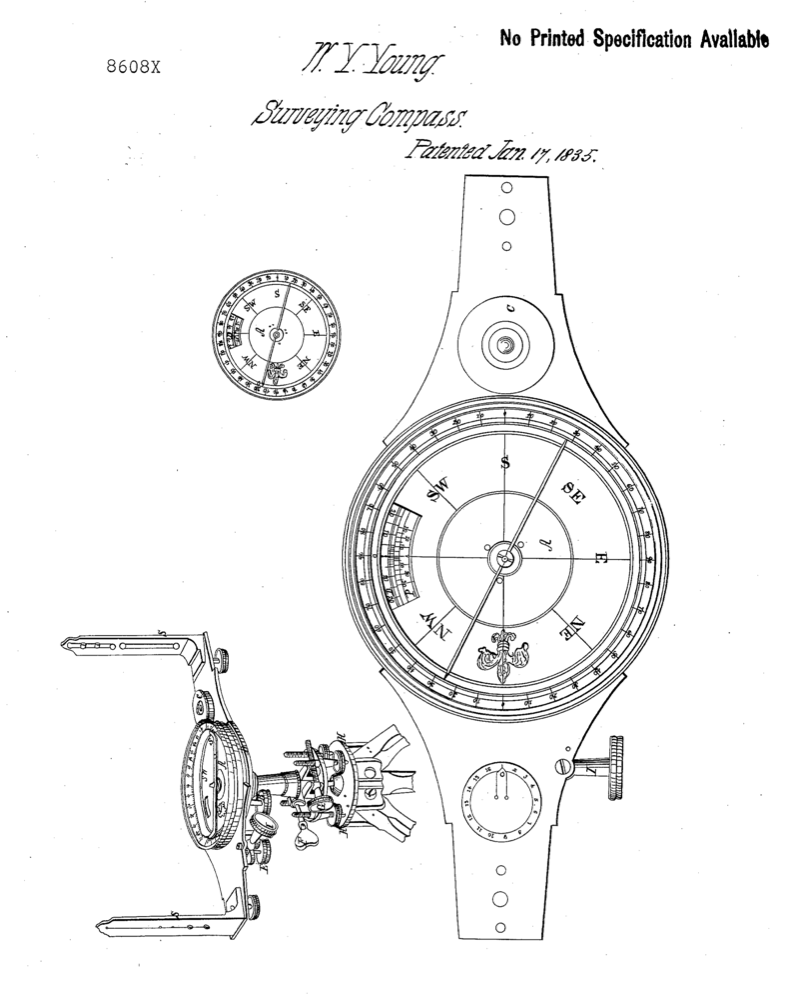
William Young created the American Railroad Compass in 1830 or so. He called it an "Improved Compass", and took out a patent on his creation. Much of the paper work for this patent was lost in a fire, but a schematic of this Improved Compass survives - click pic above. Deborah Warner penned a nice article about a Young-style Improved Compass made by Hagger in the Rittenhouse Journal (Vol 3, #4) that is worth a read.
While Young received a patent for his Improved Compass, George Adams, a famous U.K. Maker of Scientific Instruments, made circumferenters (aka compasses) that could measure horizontal angles without reference to a magnetic needle prior to 1800. Adams called it an "Improved Circumferenter". See Adam's description and diagram pictured below.
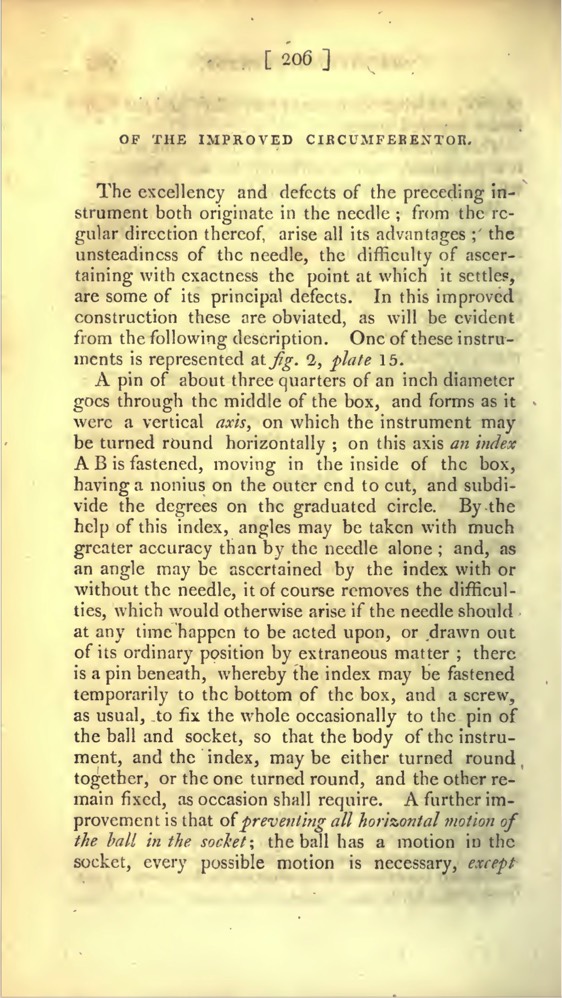
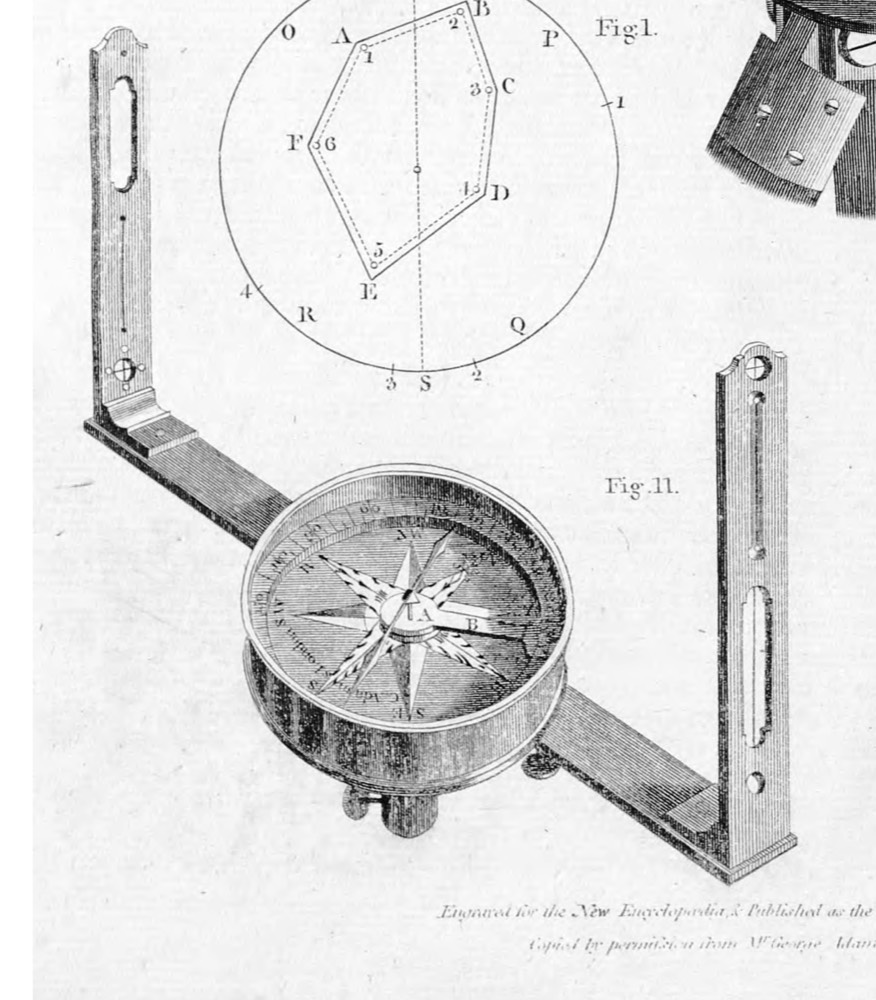
Benjamin Platt, not William Young, was apparently the first American instrument maker to create a compass that could measure horizontal angles independently of the needle. At the time Platt created the compass, Circa 1790, the compass was known more for its gimbaled appearance than its ability to measure angles without the needle. Platt apparently claimed that he created a "Compass for measuring distance in hilly country". See Bedini's book on Early American Makers, page 49.
A handful of Platt Gimbaled Railroad Compasses have survived, and are highly sought after by knowledgeable collectors.
A picture of Platt's Gimbaled Railroad Compass appears below. Note the two divided rings - Railroad compasses require two divided rings to measure angles without using a needle. The second ring can either be completely exposed, like on the Platt Compass or be in a vernier type setting where only part of the ring is exposed, like on the Young, Pike and Gurley versions.

The next step in the evolution of the American Railroad Compass was an article published in Mechanics Magazine in 1828, called "Lyon's Improved Elevating Compass". This article analyzes a custom order compass built by Benjamin Platt (presumably for a guy named Lyon). Platt basically added some bells and whistles to his standard gimbaled Railroad Compass. Importantly, the article describes the ability to measure angles independently of the needle. As far as I can tell, this is the first American published mention of the basic feature of a Railroad Compass.
William Young developed his "Improved Compass" a few years after the Mechanics Magazine article comes out. Young has railroads among his many clients, and the railroads purchase a fair number of his Improved Compasses. In an 1834 testimonial that appeared in the Railroad Journal, one Railroad mentions buying 8 Young Improved Compasses.
A number of other American instrument makers started making different versions of Young's Improved Compass shortly after Young patented and popularized the concept in America. Benjamin Pike and Richard Patten created a "Theodolite Compass" that could measure angles independently of the needle and did not have a telescope. Pike's compass is pictured at the top of this page - Patten's compass is featured below.
Please see the Pike & Son Theodolite Compass Webpage - click here.
Below you will see some pages out of Patten's circa 1852 Instrument Catalogue, which feature Paten's Theodolite Compass on the cover. Note the description of the instrument and its price. The Theodolite Compass is almost twice the cost of a regular Vernier Compass! This makes sense however when you examine a RR compass closely - it had a second graduated circle and was not doubt much more time consuming to produce.
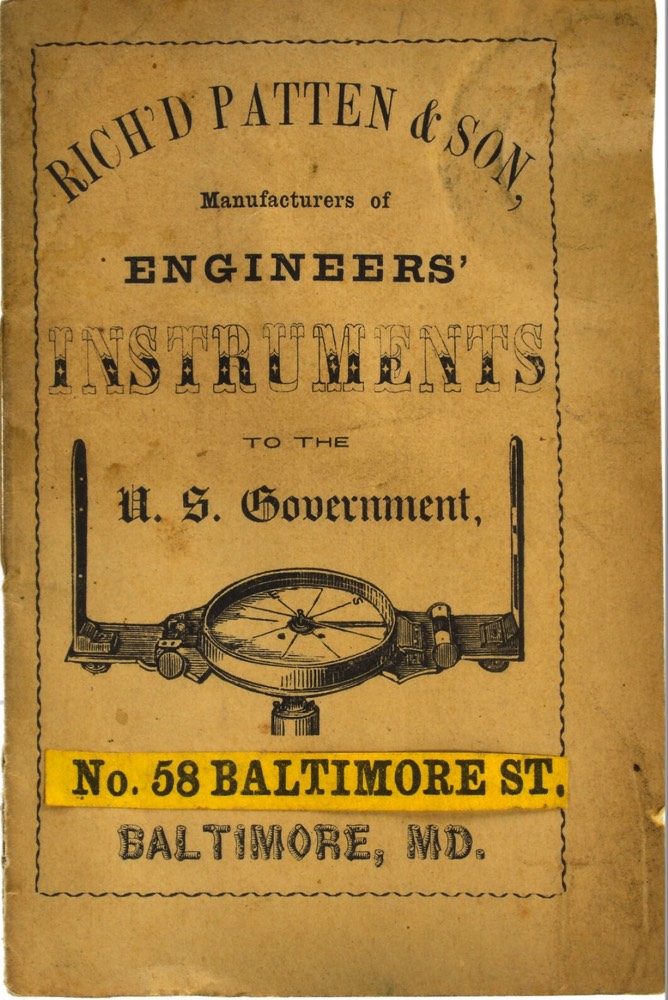
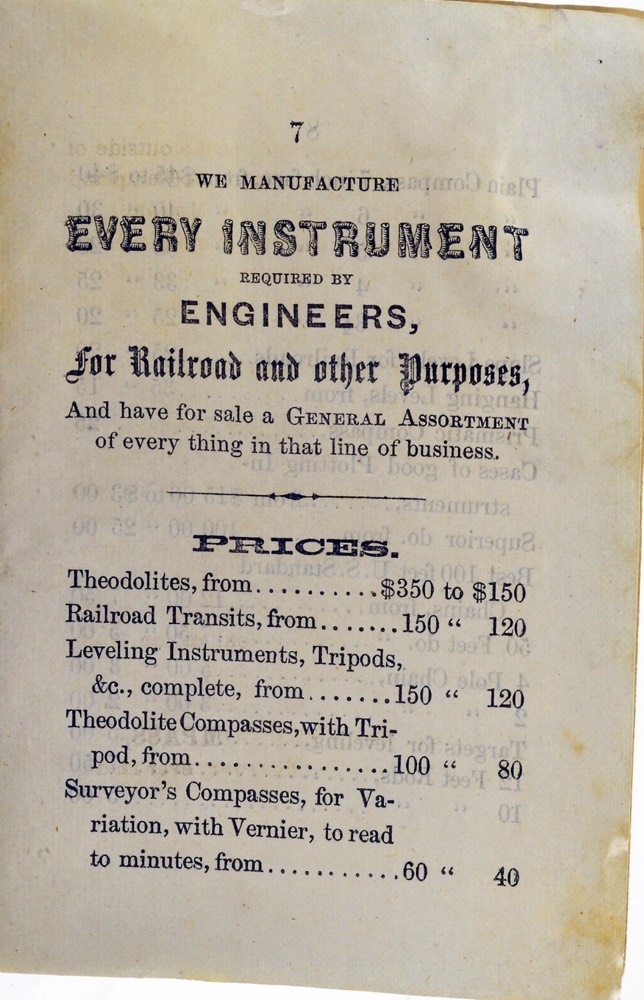
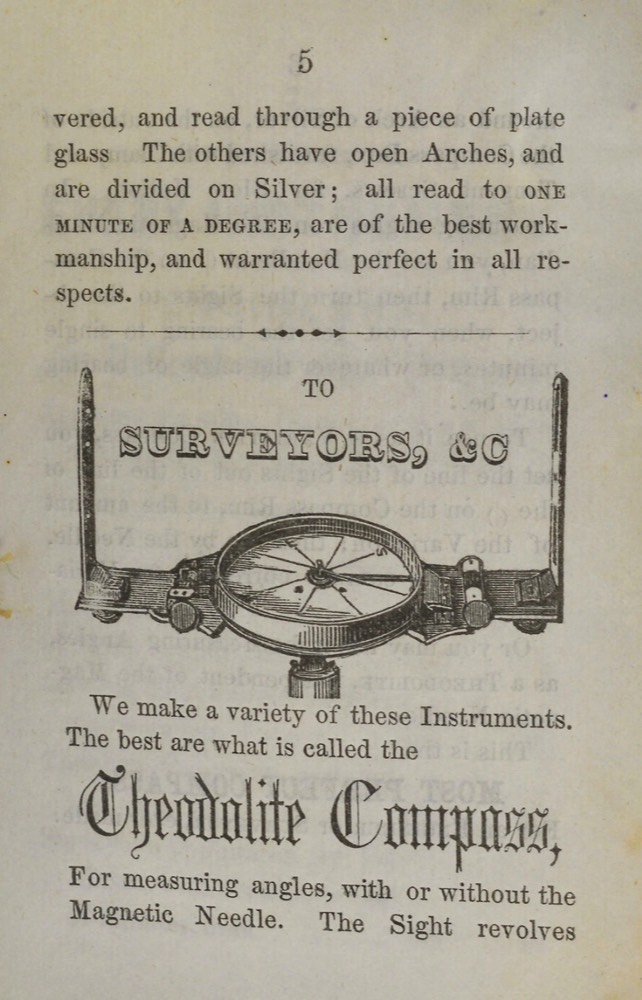
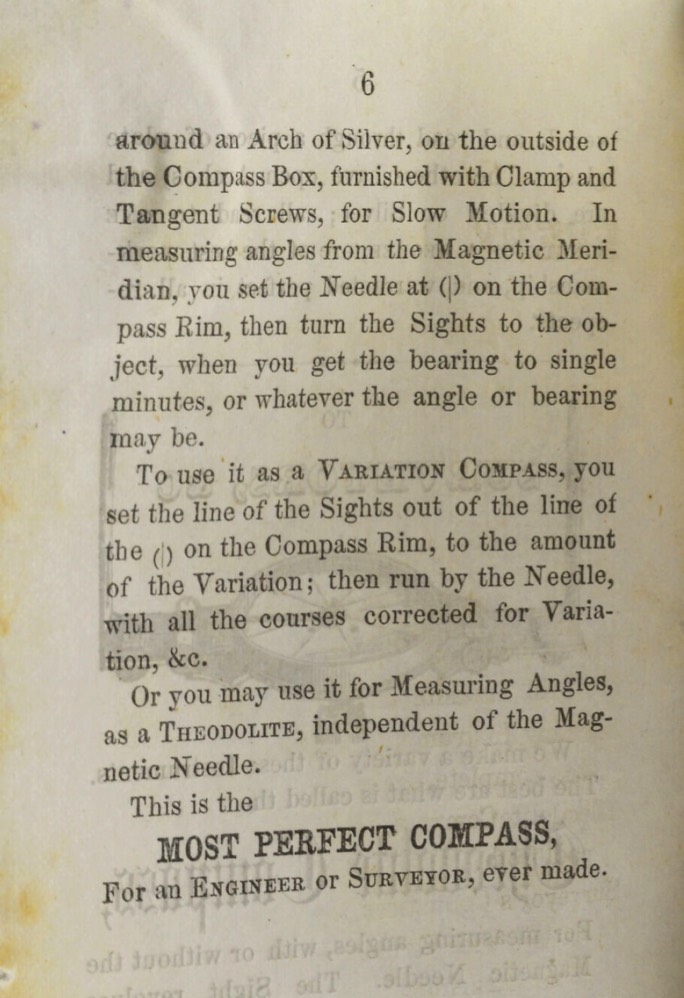
The makers in Troy NY (like Meneely, Hanks and Phelps & Gurley) also created versions of Young's Improved Compass. Meneely seemed to have embraced the Railroad Compass rather enthusiastically, as he marketed his Improved Compass in Newspapers along the East Coast in the 1830s and 1840s. (See typical Meneely ad from 1839). Oscar Hanks' famous Bow Compass is based on a Railroad Compass design, and Hanks made these compasses from Circa 1833 to 1841. According to Gurley to the long-time Gurley authority Bill Skerritt, Gurley & Phelps apparently made Railroad Compasses in 1850 or so based on trade labels he saw mentioning Railroad Compasses. And of course Gurley popularized the Railroad Compass starting with Gurley's First Manual in 1855. Gurley would dominate the Railroad Compass market thereafter. Gurley also charged very significant premiums for a Railroad Compass over Plain (2x) and Vernier Compasses (1.6x).
The term "Railroad Compass" was first used in the late 1840's apparently. I found a newspaper article dated in 1848 where Meneely said they had a couple of Railroad Compasses on hand. The National Museum of American History also suggests a mid to late 1840s usage date.
Thus, the instrument had 4 different name over the years - Improved Circumferenter (Adams), Improved Compass (Young), Theodolite Compass (Pike and Patten), and Railroad Compass (Troy NY Makers). The Railroad Compass name eventually won out, no doubt because Railroads were apparently the main purchasers of the Railroad compasses early on.
A Circa 1860 Gurley Railroad Compass is pictured below. You can also see my webpage for this instrument here.


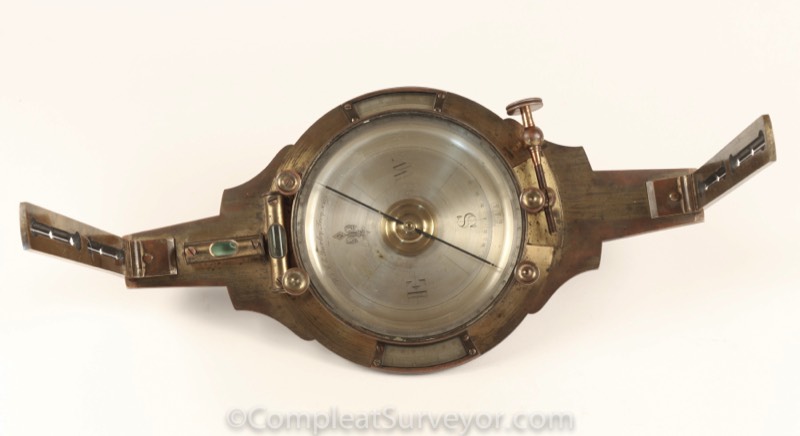
© 2020 Russ Uzes/Contact Me